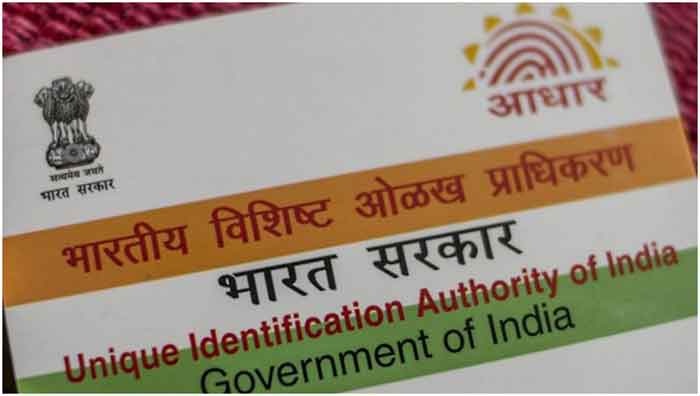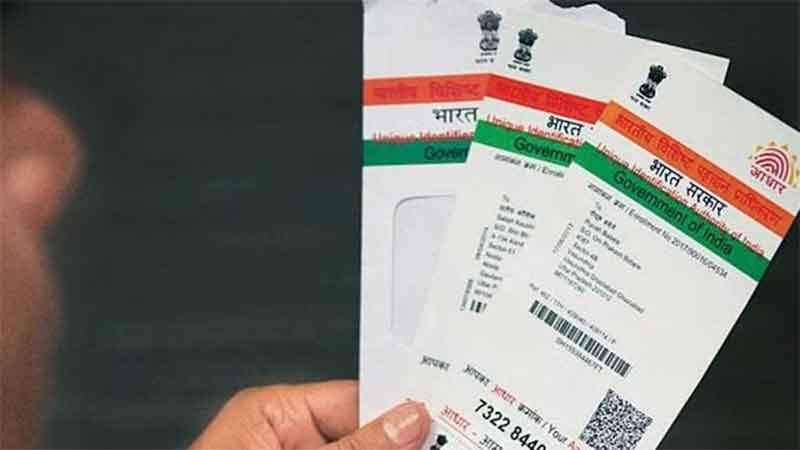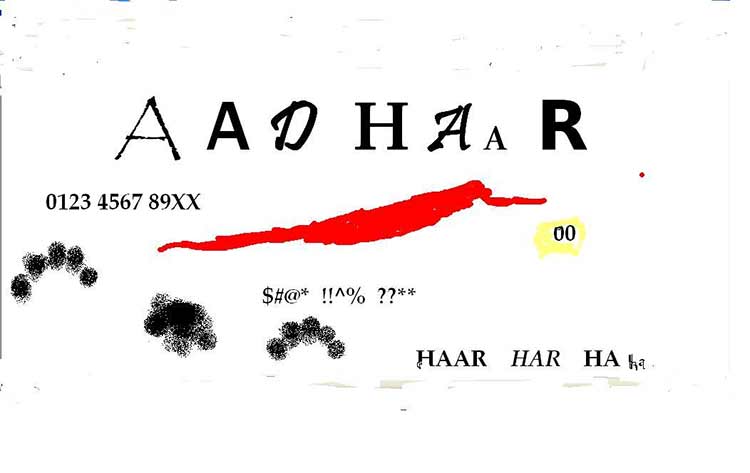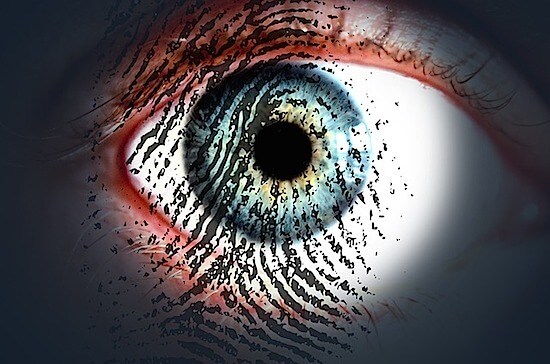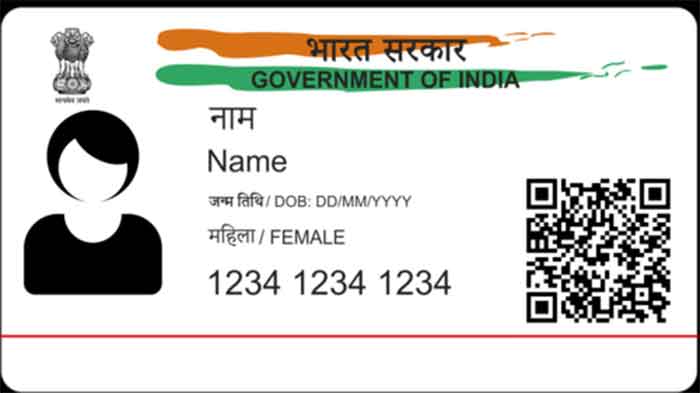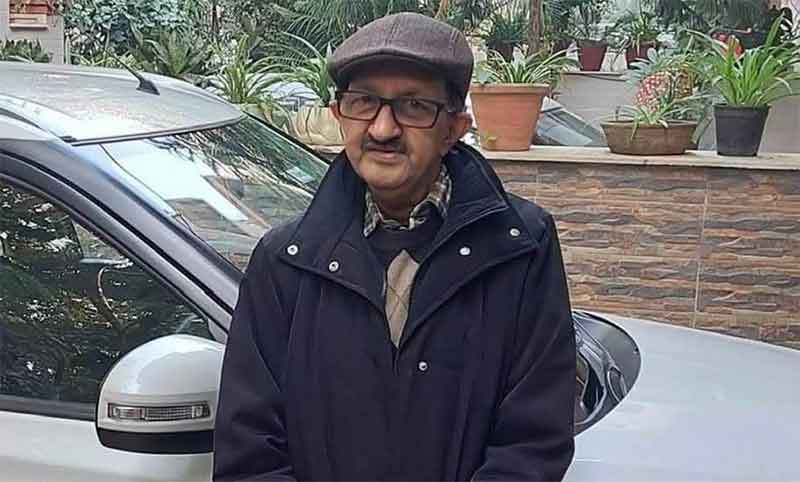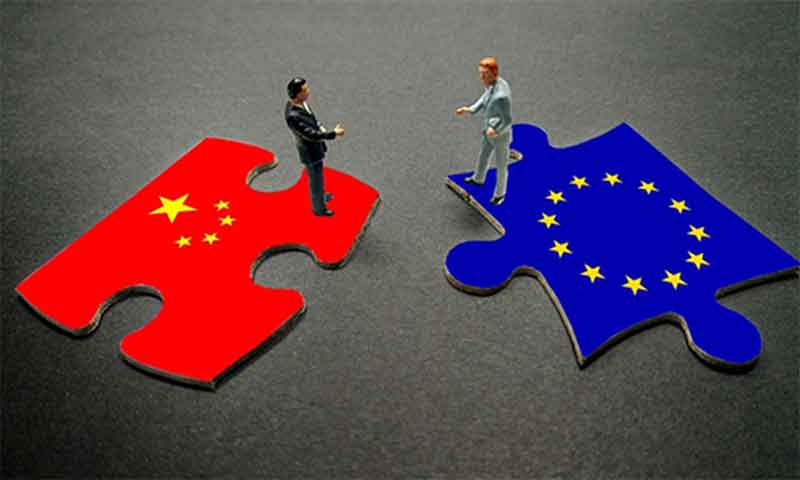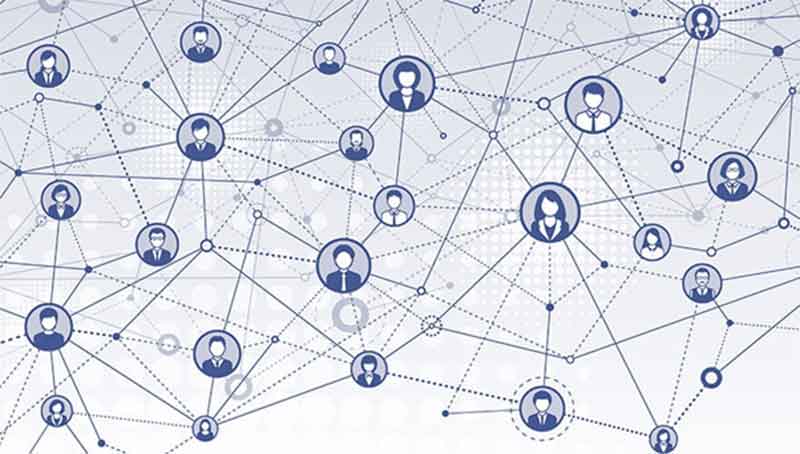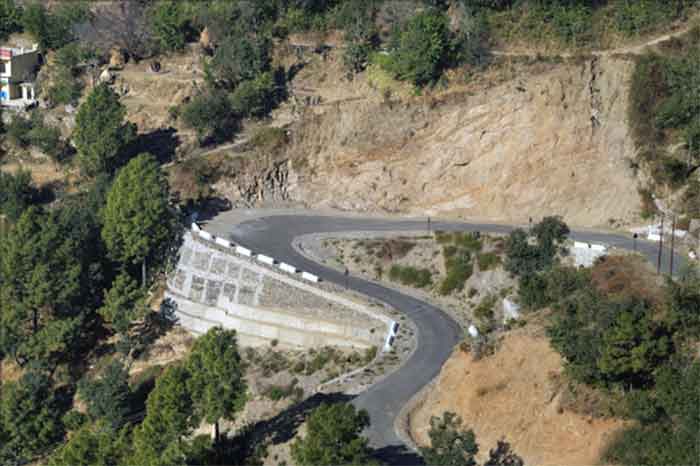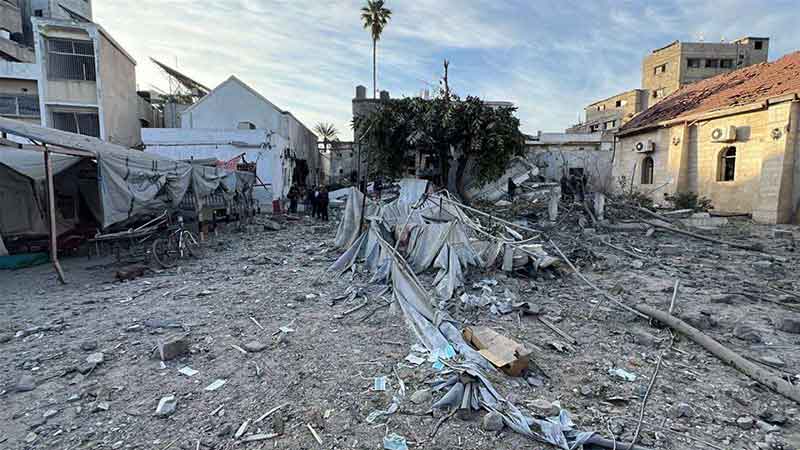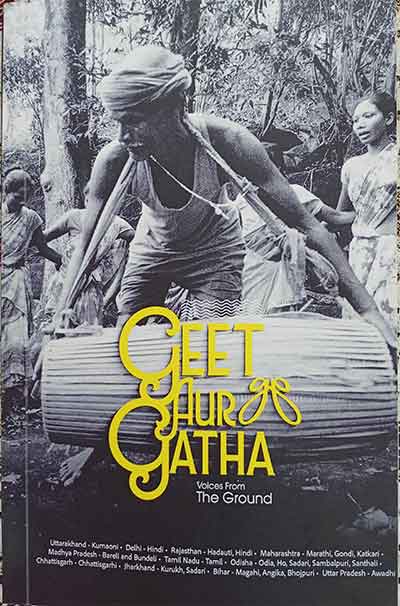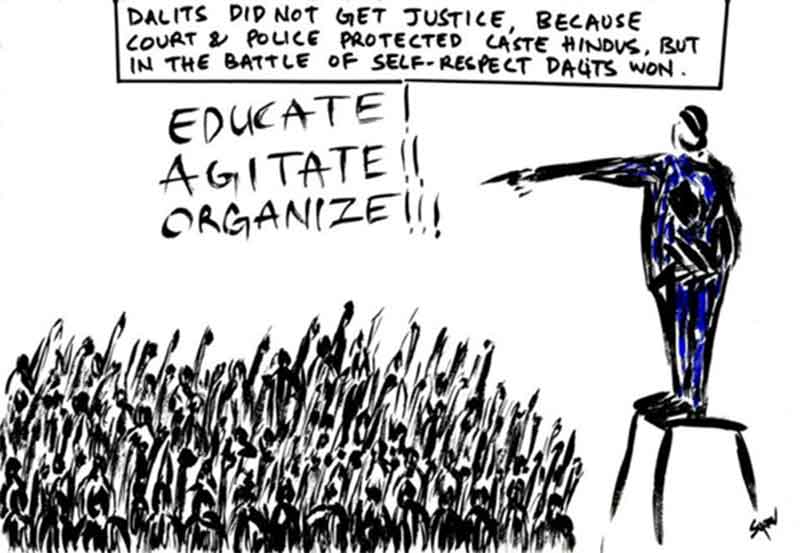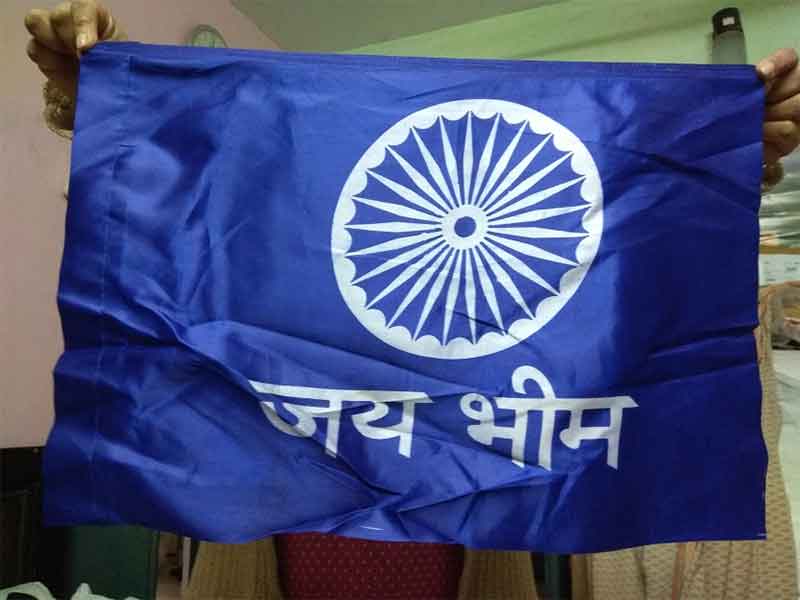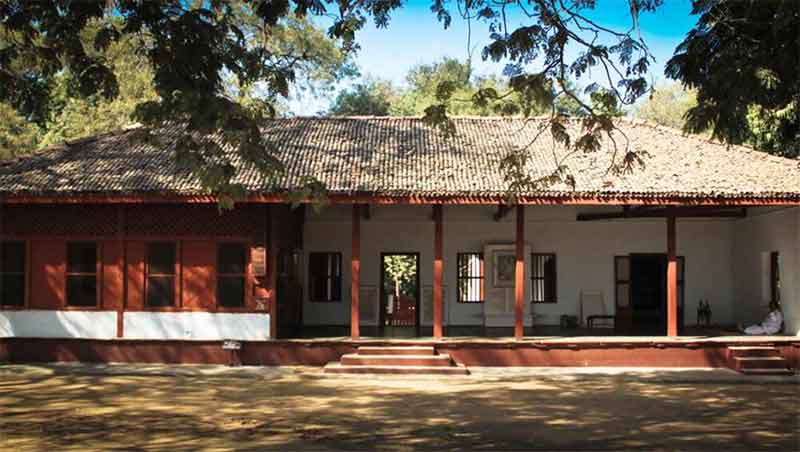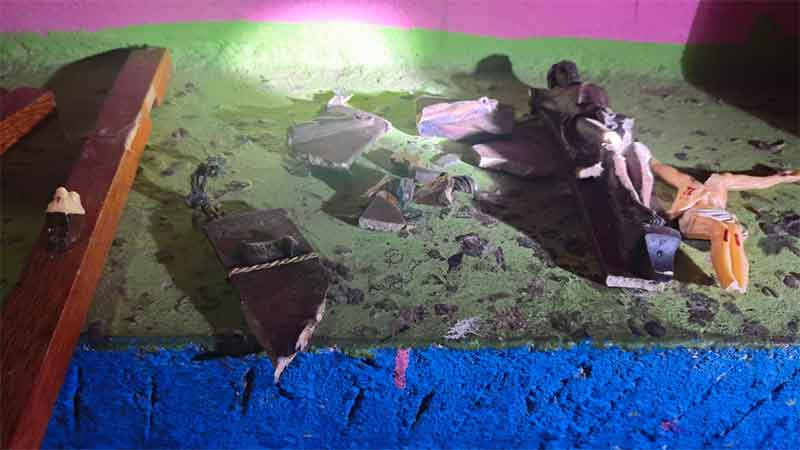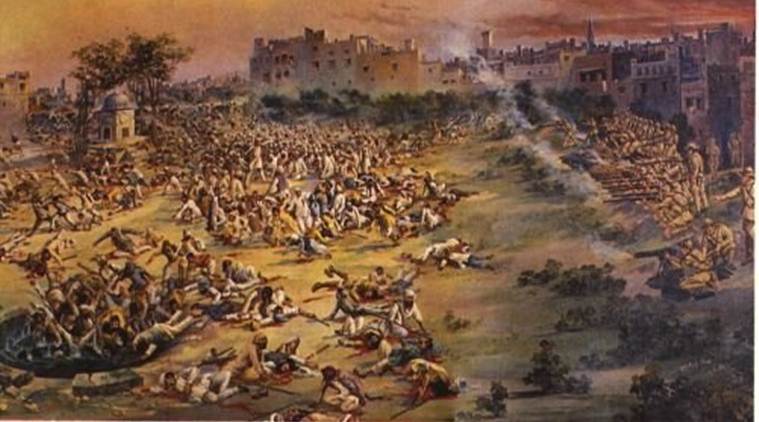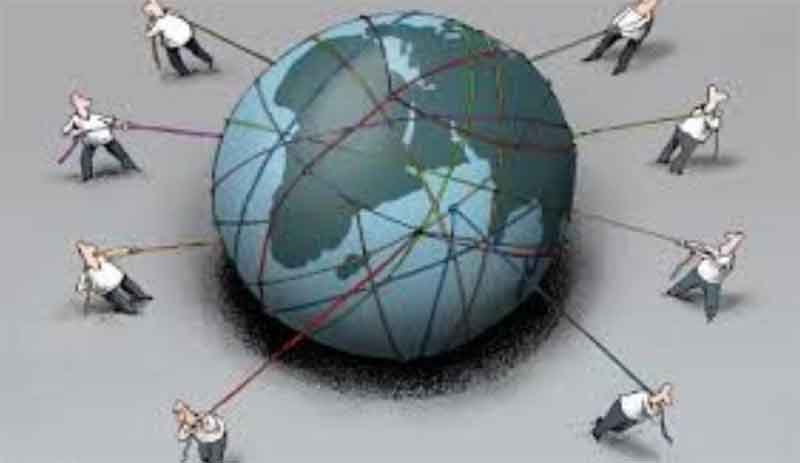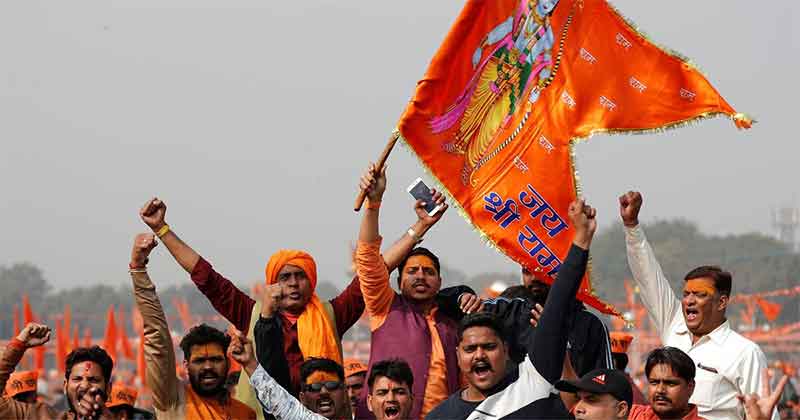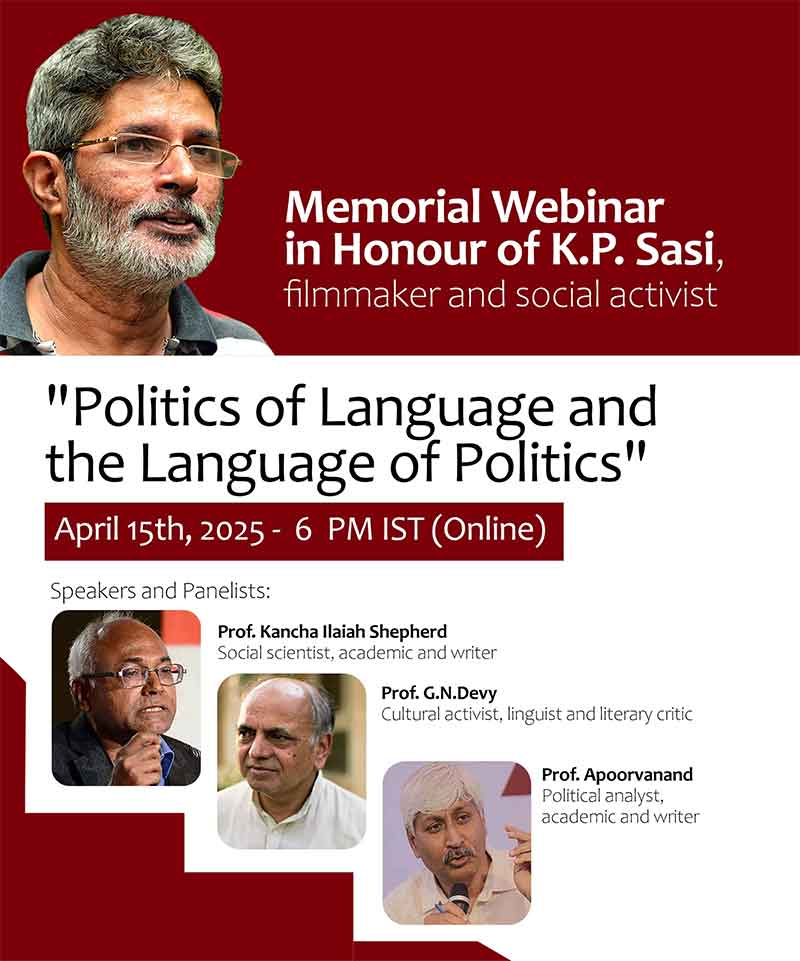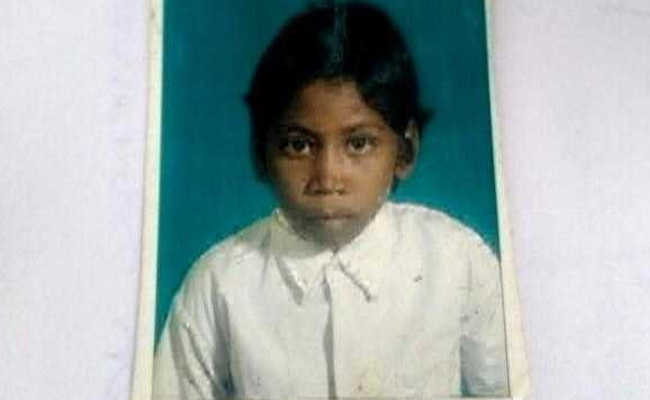
Santoshi Kumari
In August 2017, in KS Puttuswamy v Union of India[1], commonly known as Privacy judgment, the nine judges bench of the Supreme Court unanimously in its landmark verdict established the fundamental right to privacy and transformed the civil rights jurisprudence.The decision strengthened the claims of citizens to the individual right to privacy, personal autonomy and the bodily integrity. Even earlier, the right to life with dignity as guaranteed under the Article 21 of the Constitution has been interpreted in its wide scope by the Courts in innumerable matters. In PUCL v Union of India[2], popularly known as the Right to Food Case, the Supreme Court in a series of orders defined and shaped the of citizens’ rights against hunger, starvation deaths and malnutrition. Despite of these affirmative judicial interventions, on 28 September, 2017, in theSimgeda district of Jharkhand, a 11-year-old girl Santoshi died after starvingfor eight days. The ration card of her family was not linked to the Aadhaar and therefore the family could not receive subsidizedfood grains for months from the local ration shop. This case is not an aberration. In Jharkhand itself, 11 lakhs ration cards have been cancelled because the card holders have not submitted their Aadhaar numbers. Many other such cases have been reported from other areas too which confirmed that poor are excluded in the process of digitization of the citizen’s identity. A fact-finding report by PUCL confirmed that in Gokarana Town of Karnataka three Dalit brothers died due to starvation because the ration was denied to the family as they could not submit their Aadhaar card[3]. The biometric mechanism has deprived and excluded most poor and vulnerable out of poor population of their grain entitlement forcing many to die due to chronic hunger and starvation. In fact, India has been ranked at 100thposition out of 119 countries in the Global Hunger Index in the year 2017 in a report released by the IFPRI[4]. In 2014, the country was ranked at 55th position by the same Index. Many sets of petitions and PILs have been filed before the Supreme Court urging it to intervene and stop mandatory imposition of Aadhaar. This essay looks into this conflict between the right to food of the common citizens and coercion by the state to link it with the Aadhaar card. Can hunger be linked forcefully with a citizen’s identity leading to extreme consequence of death due to starvation? Can an ordinary life be captivated in a piece of paper? Can democracy be allowed to wither and die every day when poor are coerced and are forced to die because they could not link their identity with biometrics?Can the state blame and punish the poor and vulnerable for not following the bureaucratic ordersby depriving them of their legal entitlements?The essay suggests that contrary to what is portrayed by the state or even the international organizations such as World Bank, the digitization of the identity is in no way benefitting the citizens or eliminating corruption. Rather this coercive seeding of Aadhaar with the ration card and other welfare schemes is an anti-people measure which is excluding the poor and vulnerable and deny them of their basic legal rights. Instead of eliminating hunger or eradicating corruption, such forced undemocratic practices by the anarchical totalitarian state are taking away people’s basic right to life with dignity. The imposition of such extreme unconstitutional measure is empowering the authoritative state against the vulnerability of powerless citizens.
I
Right to Privacy: A Landmark Verdict
In Privacy judgement, the 9 judges Bench of the Supreme Court in its 547 pages long verdict while deliberating on the various aspects of right to life, right to dignity and the right to personal autonomy under the Indian Constitution affirmed the existence of right toprivacy as a fundamental right. Justice Sapre noted that dignity imposes “an obligation on the part of the Union to respect the personality of every citizen and create the conditions in which every citizen would be left free to find himself/herself and attain self-fulfillment.” (para 8) Justice Nariman upholds that “The dignity of the individual encompasses the right of the individual to develop to the full extent of his potential. And this development can only be if an individual has autonomy over fundamental personal choices and control over dissemination of personal information which may be infringed through an unauthorized use of such information.” (para 85) Justice Chandrachud while grounding privacy in the realm of dignity, autonomy, liberty and integrity noted, “Privacy of the individual is an essential aspect of dignity. Dignity has both an intrinsic and instrumental value. As an intrinsic value, human dignity is an entitlement or a constitutionally protected interest in itself. In its instrumental facet, dignity and freedom are inseparably inter-twined, each being a facilitative tool to achieve the other”. He further explained “Capture of social welfare benefits can be obviated only when political systems are transparent and when there is a free flow of information. Opacity ensures to the benefit of those who monopolize scarce economic resources”.[5] While quoting Nobel Laureate Amartya Sen’s work he explained that the political liberties and democratic rights are `constituent components’ of development and that the protective role of democracy can check the autocracy being imposed by the rulers. Sen[6] has explained and as also quoted by Justice Chandrachud, “The causal connection between democracy and the nonoccurrence of famines is not hard to seek. Famines kill millions of people in different countries in the world, but they don’t kill the rulers. The kings and the presidents, the bureaucrats and the bosses, the military leaders and the commanders never are famine victims. And if there are no elections, no opposition parties, no scope for uncensored public criticism, then those in authority don’t have to suffer the political consequences of their failure to prevent famines. Democracy, on the other hand, would spread the penalty of famines to the ruling groups and political leaders as well. This gives them the political incentive to try to prevent any threatening famine, and since famines are in fact easy to prevent (the economic argument clicks into the political one at this stage), the approaching famines are firmly prevented.”
In a nutshell,the right to privacy and its linkages to the human freedom and dignity as explained in the verdict is beautifully compiled by Prof Badri Raina:
“Nine good men from the highest House
Of Constitutional guarantee
Have spoken in one ringing voice
That to be human is to be free.
To be free is not to be
Held captive in a card;
To be at the lordly beck and call
Of one or the other tinsel god.
To be free of course does not mean
To subvert the common good;
But it surely means that the common good
May be differingly understood.
That damage to the common good
May be less from common men
Than from those who lord the state
And questionable elections win”[7].
II
The Right to Food: A Spectacular Success of Social Litigation
The concept of the right to food can be elaborated in two aspects. One is freedom from hunger and second is right to clean, nutritious healthy food, freedom from malnutrition, right to clean drinking water, education, health care[8] and over all basic dignity to life for all including the farmers and peasants[9]. The Supreme Court in PUCL v Union of India[10] made the government accountable to legally enforce the citizen’s right to food. The Public Interest Litigation was filed in 2001 when several Dalits and tribal citizens died of starvation in the South-East Rajasthan despite of the fact that the warehouses were brimming with excess of around 40 million tonnes of food grains that year. Since then, the SC has through the series of orders madethe right to food as an enforceable right[11]. The Court went on to the extent of appointing commissioners to ensure that the orders were implemented even when the State showed its reluctance to this idea[12]. However, on 10th February 2017, the Supreme Court, 17 years after first judicial intervention, while disposing off the petition noted, “In view of the passage of the National Food Security Act, 2013, nothing further survives in this petition. In case the petitioner has any grievance with regard to the implementation or otherwise of the National Food Security Act, 2013, he may file a fresh petition”. The stateconvinced the court that this legislation has sufficient provisions to monitor its implementation and therefore the continuous judicial supervision is no longer required. However, soon after, the state imposed notification to make Aadhaar mandatory for Mid-Day Meal Scheme[13]. This compulsory imposition of Aadhaar to ensure food security by the State and its mandatory linking for implementation withwelfare and social security programmessuch as MNREGA, essential to uphold the right to life guaranteed under the Article 21 of the Constitution disrupt the smooth operation of the Right to Food as a result of which Santoshi and millions like her are being deprived and denied of their basic rights.
III
Common People Denied Food Grains and are Deprived of Life WithDignity
On September 28, 2017, Santoshi Kumari, a 11-year-old died starving for eight days asking for rice because the administration stopped subsidized food for her family for past several months[14]. Initially, the state denied that she died due to starvation and reported that her death is caused due to Malaria. After the probe, the state government made various excuses to escape its responsibility[15].Located 150 kms away from Ranchi, in Simgeda District of Jharkhand many like Santoshi’s family are denied subsidized food because they failed to link their ration card with their Aadhaar card[16]. Several reports show that across the state of Jharkhand the public distribution system is in pathetic condition. Those on the margins are made to struggle and to run around from pillar to post to authenticate their identity and their existence by running around to administrative office to ration shops to local panchayats, scanning their worn-out fingers, showing papers and requesting officials in order to seek what they are legally entitled to under the National Food Security Act and other social security provisions[17].
Of the 2.3 crore Jharkhand citizens who are covered under the Public Distribution System, the government’s own records available online show that only 1.7 crore have seeded their Aadhaar numbers[18]. Villages in surrounding areas had no jobs under the NREGA for months.A 40-year-old rickshaw driver Baidyanath[19] too died of hunger in Jharia Police Station Area. He could not get the food for several days, fell sick and died. Media reports state that initially his name was registered in the family’s ration card where his brother was depicted as the head of the family, but after the death of his brother three years back, his name was deleted and since then Baidyanath was running around to get his name on the card.Many such people are facing problems because either their name is not recorded, wrongly recorded or deleted from the ration card or the digital data necessary for biometric authentication. Despite of the orders and guidelines by the Supreme Court that the beneficiaries cannot be denied access to welfare schemes even if they do not have Aadhar, the state governments issued notifications to the contrary[20]. The arrogant state failed to admit the fact that there is no fall back in case the Aadhaar based authentication fails due to lack of connectivity, biometric failure, server problem, wrong seeding or linking of Aadhaar data, cryptic error messages and other such technical faults[21].
This move of linking Aadhaar with the ration card clearly violates Supreme Court order pronounced in March 2015 and is resisted by many[22]. According to the reports, in a poor state such as Jharkhand one cannot expect 100 percent coverage. Most of beneficiaries are poor dailts and tribal families and majority are engaged in hard labour. It has been said that often finger prints are erased because of hard manual work or the machine could not recognize the finger prints due to technical glitches. Thus, many are excluded and faced hardships and in a survey conducted in rural Jharkhand it was found that most of the vulnerable population consisting of 10 to 15 % population is excluded because of biometric identification system. Corruption has not gone but the transaction cost has increased. The hunger has not ended despite the superfluous measures of linking in with Aadhaar card. The PDS system, various other social security schemes to provide food to hungry, the lip service being paid by successive governments all have failed to put food into the plates of hungry vulnerable and deprived. Significant issue of feeding starving children, men and women, got lost in the paraphernalia of government machinery, paper work, digitization and politics surrounding the issue[23]. And this not a new phenomenon. Depriving the vulnerable of their rights, excluding those at the margins, denying vulnerable their basic entitlements by politicizing the issue has been happening for several decades. Policies, laws and programmes are made after much hue and cry but these are not implemented. Most of these programmes help the state to project its image as a benefactor or support the coercive hidden agenda and delegates extensive power to the government itself rather than empowering the citizens[24].
The current situation where innumerable people are being made to suffer because of chronic hunger and are forced to die due to starvation, depictsthat the governance has collapsed. The system cannot feed its hungry citizens or save lives and has failed to eradicate hunger or poverty despite of constitutional, international and legal provisions. It is the failure of the so called largest democracy that could not fulfill the essential basic needs of a large number of people to lead a dignified life. It is not about the number of starvation deaths or the number of people who are dying every day and every moment because of hunger rather it is a departure from the system of legal and the constitutional rights to the arrogant autocratic mode of display of power which overlooks the delivery of services. The state created to serve the nation is acting as an arrogant master rather than serving the population. What is deployed is the language of compulsion but what is ignored is the real issue. The social order treats millions of documented and undocumented citizens as disposable and potential suspects and criminals stealing food grains and other resources. Violence and coercion became a tool in the hands of authoritarian government to punish those who do not follow its order unquestioningly. The democratic structure is crushed and made to die every moment when ever any death took place due to hunger or starvation.
IV
Can Hunger be Linked to Aadhar?
The move to link biometrics of citizens with the services provided by the state has been advocated not only by the Indian state but also by the international organizations such as World Bank. The strategy of such organizations is to establish biometric system in the third world and developing countries. A funded research paper by the World Bank and other organizations states that “The success of governments in combating corruption or delivering public services efficiently relies on positive and accurate identification of their citizens and the ability to cross-reference databases and information across government departments and agencies. This is only possible if a national system that allows individuals to be uniquely identified exists. Unfortunately, this is not the case for many developing countries”[25]. It has been argued that such a system of reducing people to numbers may help to reduce pilferage in delivery of public services’, tocombat fraud’, and for the purpose of monitoring and surveillance’. Thus, this approach took one sided pro-state, pro-establishment and anti-people, anti-citizens and anti-poor approach which presumes that it is the poor citizens who may be indulged in theft, fraud and corruption and therefore there is a need tomonitor’and control’ people. Conveniently, this approach proposedmonitoring and surveillance’ of people at the receiving end rather than creating the transparency’ within the system or fixing theaccountability’ of those who are providing the services. Instead of examining the system of governance and looking at the problems in the system of distribution of resources this approach labelscommon people in the developing countries as suspects’ andcriminals’ who are habitually stealing the state resources and therefore should be kept under the vigil.
In fact, this funded paper’ by the World Bank itself while examining the historical background of the biometric system states that this system was initiallydeployedto identify thesuspects’ for the criminal identification purpose. It was then used by the federal agencies and the department of defense, department of energy and other such offices world over to protect confidential files and documents. Gradually, the large corporations started utilizing this system “to prevent hourly employees from punching time cards for their absent friends, which costs employers hundreds of millions of dollars annually. It is also being used by major casinos in North America to spot known cheaters”[26]. The paper further argued that the “Biometrics can help determine whether applicants are already enrolled under a different identity and thus can prevent individuals from cheating public sector benefits programs by collecting benefits under multiple identities”. Thus, individuals are suspected as potentialcheaters’ orcriminals’ and systems or technologies are deployed to monitor such suspects rather than making the system effective or eradicating the corruption and improving efficiency at the distribution or the supply end.
Moreover, the onus is laid on individuals rather than on the state to prove that they are not the cheaters’ orcriminals’. No mention was made regarding the accountability of the state or to the inefficiencies within the state apparatus. Though the large amount of research studies[27] have focused on problems and corrupt practices that exist at the level of the state or within the system, yet this funded research and many like this one took one sided pro-state view while labelling common citizens as criminals and corrupt persons. For the governments in the developing countries too, this approach is convenient because it shifts the onus from the state to the citizens. The corruption and problems within the system could continue as it is because now the entire focus in laid on to the citizens whereby the state can easily escape its responsibility. For every incidence on `leakage of resources’ it is easier to blame poor and marginals and therefore the state cannot be held accountable for its wrongs. Instead of plugging loopholes in the delivery system, biometric system such as Aadhaar has become a systematic tool for murdering the poor and the marginalized. The state governments in the developing countries therefore are not bound to take any action for eliminating poverty once poor are eradicated from the system. There are other papers and presentations[28] too where the World Bank and other such organizations while manipulating data and statistics[29] show how the biometric system is benefitting state at large while overlooking the fact that coercive imposition of such system on people and labeling people as criminals and corrupt is not going to help anyone.
The Indian government embraced this concept of biometrics as Aadhar also known as Unique Identification number which is a 12-digit number and links it to citizens’ biometric identity including finger prints and iris scan. The grand project ambitiously is designed to capture and make biometric and online identity database for 1.25 billion of people. Backed with no law, it was started as a voluntary programmepushed through an executive order by the Manmohan Singh’s government to help tackle fraud but gradually it became mandatory[30] for growing number of essential services and is converted into biggest surveillance engine. The state never briefed citizens about its fall outs or implications of sharing their private data but imposed it coercively creating fear of being excluded from various services such as bank account, mobile services, welfare benefits under various schemes such as pension and ration, LPG connections, getting admission in schools and getting subsidies.The National Identification Authority of India Bill, 2016which when presented was sent to a special committee of Parliament which recommended that the data protection legislation is a prerequisite to this Aadhaar Scheme. However, this recommendation was ignored by the government. Also, the Aadhaar (Target Delivery of Financial and Other Subsidies, Benefits and Services) Bill was introduced as a money Bill by the Narendra Modi government in March 2016[31]. Moreover, it has been lamented that the Aadhaar has several pitfalls in terms of ethics[32], legality and is considered as an unprecedent dehumainisingonslaught measure being bulldozed by unregulated and ungovernable technology[33] besides having issues in implementation[34]. Yet, the government projected Aadhaar as a successful project and boasts that more than billion people are registered under the scheme. The government claimed that it has saved USD 9 billion in fraud and wastage by eliminating fake and duplicate beneficiaries[35]. However, what is overlooked while making such tall claims is the social cost of implementing this system, the cost in terms of loss of lives, loss of work days, cost of people’s suffering, the cost of human life index parameters and most importantly the hardships caused to the common people. The state bragged that paperless and cashless transactions reduced the cost but failed to account for the cost of human life and privationsof millions. The data or numbers cannot override the quality of life. Further, the corruption, the technical issues, the problems, the loss of money still persist because of loopholes within the system[36] which has not been accounted for by the government while making such statements.
V
Coercion by the State to Link Aadhar to Social Welfare Schemes
Foucault when formulated the concept of governmentality’ argued that the state adopts a wide range of control techniques and that the idea of the government is not restricted to the state politics alone. The concept ofgovernmentality’ thus developed a new understanding of power where power not only implies hierarchical top down approach but it also includes social control. Further, Foucault used the terms bio-politics and bio-power to examine the strategies and mechanisms through which human life processes are managed under regimes of authority using power and processes while intervening on vital aspects human life. Foucault argued that neoliberal governmentality allows for creation of docile bodies while ignoring individual choices and subjective experiences and is used by the modern socio-economic and political institutions to embody power over citizens[37]. Bio-power implies “an explosion of numerous and diverse techniques for achieving the subjugations of bodies and the control of populations”[38]
Similarly, the neoliberal governments world over are subjugating populations while ignoring people’s subjectivities or experienced or the impact of decisions and are acting hegemonically to empower themselves. For instance, in the current scenario, though the Privacy judgement made no comments on the Right to Food yet the State while arguing its case claimed that to avoid corruption and identity fraud in the Schemes such as Public Distribution System, the Social Security Pension Scheme, NREGA, and others besides those under the Food Security Act, it is essential to link these provisions with the Aadhaar, and therefore tried to justify its coercion. In the outrage which broke after the death of Santoshi, the Union Health Minister claimed that by linking Aadhaar with the ration card the government has saved 14000 crores Rupees by weeding out bogus ration card[39]. In the wake of such arguments to integrate Aadhaar with the Food Security provisions, millions of people are excluded and denied their basic rights. The state boasted while cancelling the name of vulnerable citizens out of the list of beneficiaries without recognizing the fact that such imposition of anti-people programmes denied people of their basic right to live with dignity. Already Food Security Act has not been able to reach the targeted population because of administrative and technical reasons and now linkage of entitlement with Aadhaar is further denying the needy of their rightful claim. Even schemes like the Mid-Day Meals where no identity thefts are possible are brought under the purview of Aadhaar linkage. Instead of focusing on the culpability within the system such as quality of food served in Mid-Day Meal Scheme, disruptions in the programme, its outreach etc which cannot be resolved by the Aadhaar integration, the state is putting the onus on the poor citizens for the failure of the schemes. The state by shifting its focus on Aadhaar is distracting the attention to the real issued relating to the implementation of the Food Security Act and other social welfare scheme.
The biometric authenticated PDS system can work in the geographical areas which have strong internet connectivity. Further, it excludes people who are old, single, people with disabilities and others who could not get their ration card made for one or the other reasons[40]. Yet, in the states such as Jharkhand in March 2017 the chief secretary directed the district supply officer to debar ration cards from food distribution which are not linked to the Aadhar cards. In Rajasthan, 33 lakhs families could not access ration entitlements under the Public Distribution System because they could not link up their ration card with Aadhaar. In Jharkhand, 2.5 million people are deprived of their grains entitlements every month. Available data reveals that in June 2017 in Ranchi district only 67% were able to buy their grain through Aadhaar-Based Biometric Authentication. The data also reflects that damage is caused not only to the Right to Food but also people are denied benefits under the Schemes such as NREGA and Old Age Pension Scheme because the Aadhaar card cannot be seeded with the ration card or are not seeded or the biometrics of people could not be matched and therefore they are denied entitlements or as in Sarguja District of Chhattisgarh because of lack of network connectivity 124 people could not access their old-age pensions[41]. Further, it is not that the system of Aadhaar is foolproof. It has various loopholes ranging from data leakages[42] to administrative malfunction. Rather Aadhaar linkages has given rise to the new form of corruption as in many states the people implementing Aadhaar devised new methods of raising illegal money[43]. Several petitions have been filed before the High Courts in Delhi, Rajasthan, and Karnataka where in Rajasthan and Karnataka HCs have put an interim stay on linking Aadhaar with ration card. The Delhi HC has appointed a local commissioner to look into the issue of exclusion of large number of people due to Aadhaar integration.
Coercion is a form of intimidation and bullying and in this case, the state while coercively imposing Aadhaar on common citizens is attacking the basic premise of the right to food and the right to dignity of an individual. Such compulsion dilutes civil liberties and dominates to curtail fundamental rights of citizens. Aadhaar authentication was done without any transparency regarding the citizen’s rights and without any grievance redress scheme or compensation system in place, in case of failures. Aadhar is being imposed as an additional burden when already other multiple systems to authenticate the ID of the citizens already are in place ranging from the birth certificate to voters’ ID card, passport, drivinglicence, ration card and similar such documents pertaining to the identity of a citizen. Experiences show that the Aadhaar is not a citizen friendly process. It is a process for protecting the state institution.
VII
The Impact of Neglecting the Real Issues such as Hunger
India ranked 100 out of 119 countries in the latest Global Hunger Index issued by the International Food Policy Research Institute. Another report by UNICEF titled Levels and Trends in Child Mortality: Report 2017[44] stated that half of all newborn die are homed in India along with four other countries. Recently, much of the emphasis is laid by the government on Digital India, Clean India, Make in India, Start Up India, New India and a lot of other such campaigns. However, under the garb of such campaigns the real basic issue that relates to hunger and poverty is totally neglected. Though the country has formulated the National Health Policy, a National Nutrition Strategy and similar such data base, however none of such programmes could curb the growing problem of malnutrition and starvation deaths. The reason is not that the country lacks resources to feed these mouths, the problem is with the intention and willingness to eradicate hunger. A lot of money has been spent on building toilets, however, the government could envision that for the hungry souls food is a priority.
In its zeal to coercively impose Aadhaar the state punished the poor and vulnerable by depriving them of their rightful entitlements. Millions of names such as that of Santoshi and her family or of Baidyanath, the sole earning member of his family, or of three Dalit brothers in Gokarana are stuck of because these persons either could not enroll their name in the ration card or could not link their ration card with the Aadhaar card. The government projected as if Aadhaar is empowering citizens, however in actual it is doing the exact opposite.Such coercive linking of right to food with a biometric system is depriving people of their basic rights and essential necessities. The state conveniently transferred its failure of not linking people with Aadhar by punishing them and striking their name out of the list of beneficiaries without realizing the fact that such a situation will create a havoc. The state adopted the policy of blaming the victims and the vulnerable for its own failure in implementing the programmes and schemes. Hannah Ardent in her famous work, `The Origins of Totalitarianism’ explained that “A fundamental difference between modern dictatorships and all other tyrannies of the past is that terror is no longer used as a means to exterminate and frighten opponents, but as an instrument to rule masses of people who are perfectly obedient”. She further argued, “We are not concerned here with the ultimate consequence of rule by terror—namely, that nobody, not even the executors, can ever be free of fear; in our context we are dealing merely with the arbitrariness by which victims are chosen, and for this it is decisive that they are objectively innocent, that they are chosen regardless of what they may or may not have done.” Similarly, today what is imposed in India and in other developing countries is a totalitarian regime where the masses are kept in dark or as Ardent puts it, “Terror becomes total when it becomes independent of all opposition; it rules supreme when nobody any longer stands in its way. If lawfulness is the essence of non-tyrannical government and lawlessness is the essence of tyranny, then terror is the essence of totalitarian domination.”
Sudhaar not NiradhaarAadhaar (Reform the System and not Force the Baseless Biometrics)
Both the Privacy judgement and the Right of Food Case when read together could be interpreted to have a large impact on the right to food. The State instead of focusing on Aadhaar should pay attention to the real issues involved in the implementation of the social welfare laws and schemes. The Right to food as guaranteed constitutionally and legally must be translated into reality in urgent basis.There is a need to reform the approach and perspective with which the whole issue of citizen’s identity and its linkage with the Right to Food and other social security measures have been viewed. The system should device the element of accountability’ andtransparency’ on the part of the state as a welfare state’ as well as state as aservice provider’ rather than suspecting the citizens of being indulged in corrupt practices. Draconian measures are not the solution where the democratic state is strong. The power of bureaucracy cannot be subterfuge to write rules which are unconstitutional and violates the basic premise of the constitution. All notifications linking Aadhaar with social welfare schemes and laws should be immediately withdrawn. There is a need to inbuild a system of accountability – the government should be made accountable for the negligence, for killing many Santoshis, for denying and depriving food to the most vulnerable, for neglecting to fulfill its constitutional obligation pertaining to the right to life with dignity to all citizens. Instead of making paperless system or cashless economy, attention must be paid to people-centered system, making benefits available to all those who are needy in a timely manner. It is hopedthat the Supreme Court, the apex body which is a custodian of constitutional rights, while deciding many petitions on Aadhaar and the right to food may also interpret the provisions to set in the accountability of different stakeholders which is conveniently neglected by the law makers and the law implementers. As citizens, we need to fight for our unfettered freedom as has been done in history. Earlier, we defended ourselves against monarch, dictators, military and colonial rulers, now there is a need to defend citizenship rights against democratically elected governments through collective struggles. And even today, freedom needs to constantly defended and protected – freedom to live a life with dignity, freedom from hunger, poverty and malnutrition, freedom to survive and exist.What is required is to create a robust democracy where citizens are not punished or subjected to any form of repression and tyranny by the state. Brutal assault on the basic rights should no longer be tolerated. The authoritarian state cannot use the tools to control people and render them powerless. To conclude, I quote Gelles Walt poem titled `Linking of Aadhaar to Heart Beat: A Positive Aspect’ which is beautifully penned down and suggests to how Aadhaar and its coercive linkages in the day to day life of a common citizen is making an adverse impact.
I linked my Aadhaar to my Pan Card.
Then I linked my PAN card to my bank account.
Then I linked my Aadhaar to my bank account.
Then I linked my Aadhaar to my tax return.
Then I linked my Aadhaar to my LPG gas connection.
Then I linked my Aadhaar to my mobile phone.
Then the Government issued a decree ordering
that all persons must link their Aadhaar to their heartbeat
within three months or face discontinuation of the heartbeat.
Unfortunately, I was not able to link my Aadhaar to my heartbeat
on the Central Cardio-Monitoring System
due to technical glitches and the monumental pile-up
so my heartbeat was discontinued and I died
on DD/MM/YYYY termination time: 06:04:32.
Now, looking back from heaven or hell or wherever,
I contemplate the 23,482,154 persons who died like me
for failure to comply with the edict
and I scan the voices of well-paid apologists—
TV pundits, newspaper columnists, sociologists—
who claim the Aadhaar-Cardio linkage
was a bold, courageous, totally justified experiment
that will yield many long-term benefits, just like demonetisation,
even though the Aadhaar-Cardio Program did cause some
“inconvenience to the common man”
just like demonetisation which also killed countless people
through job loss, wrecked businesses, shattered lives, cash-starved farms,
lack of food and medicine.
Up here or down here
in heaven or hell or wherever,
there is no Aadhaar
there is no PAN
there is no heartbeat
there is no inconvenience to the common man (or woman)
except the dread of having to go back to join the sheeple[45].
The author is a common citizen fighting for justice for common citizen in the tyrannical totalitarian regime. She may be contacted at [email protected]
[1] WPC 494 of 2012http://supremecourtofindia.nic.in/supremecourt/2012/35071/35071_2012_Judgement_24-Aug-2017.pdf
[2] 2007 (12) SCC 135
[3] Johari Aarefa (2017) Three brothers died in Karnataka after being denied food rations for lack of Aadhaar, say activists, Scroll.in October 19, https://scroll.in/article/854643/three-brothers-die-in-karnataka-after-being-denied-food-rations-for-lack-of-aadhaar-say-activists
[4] Danial Shoaib (2017) Worse than Iraq, Bangladesh and even North Korea – these charts show how hunger haunts India, Scroll.in October 14, https://scroll.in/article/854073/worse-than-iraq-bangladesh-and-even-north-korea-these-charts-show-how-hunger-haunts-india
[5] Note 1 Para 155
[6] Sen Amartya (2000) Development as Freedom, Oxford University Press, p. 180
[7] Raina Badri (2017) Right to Privacy, Carvan Daily August 25 http://caravandaily.com/portal/right-to-privacy-badri-raina/
[8]Dreze Jean (2004) Democracy and Right to Food, The Economic and Political Weekly April, 1723-31
[9] Nigam Shalu (2015) Everyday Survival, Everyday Struggle: Fighting Against Hunger in South Asia, Countercurrents, January 26 https://countercurrents.org/nigam260115.htm
[10] Supra.
[11] The Food Security Act was enacted to ensure that the right to food is made a legally enforceable right
[12] Right to Food Campaign Secretariat (2008) Supreme Court Orders on Right to Food: A Tool for Action, Delhi, http://www.sccommissioners.org/CourtOrders/tool_for_action.pdf
[13] Scroll.in (2017) Compulsory Aadhaar linkage to mid-day meal deadline extended by 2 months, May 9, http://www.livemint.com/Education/3XcBbyKpWvExPGohFDUmtJ/Compulsory-Aadhaar-linkage-to-midday-meal-deadline-extended.html
[14] Pandey Prashant (2017) After starvation death case: Jharkhand minister scraps top state official’s order on Aadhaar-PDS link, The Indian Express October 22, http://indianexpress.com/article/india/after-simdega-childs-death-jharkhand-minister-scraps-top-state-officials-order-on-aadhaar-pds-link-4900679/
[15] Pandey Prashant (2017) Death of Simdega girl: Jharkhand Minister Saryu Roy questions his Govt on Aadhaar drive, The Indian Express, October 18, http://indianexpress.com/article/india/death-of-simdega-girl-jharkhand-minister-questions-his-govt-on-aadhaar-drive-4896017/
[16]TikkuAloke (2017) No Aadhar no ration is Grim Reality for Many in the Jharkhand Village. October 19, NDTV https://www.ndtv.com/india-news/no-aadhaar-no-ration-is-grim-reality-for-many-in-jharkhand-village-1764701?pfrom=home-india
[17]PachisiaStuti (2017) No Aadhaar, no food rations: 11 stories that show the Jharkhand child death was no aberration, Scroll.in, October 20, https://scroll.in/article/854587/no-aadhaar-no-food-ration-11-stories-that-show-the-jharkhand-child-death-was-not-an-aberration
[18] Johari Aarefa (2017) Denied food because she did not have Aadhaar-linked ration card, Jharkhand girl dies of starvation, Scroll.in, October 24, https://scroll.in/article/854225/denied-food-because-she-did-not-have-aadhaar-linked-ration-card-jharkhand-girl-dies-of-starvation
[19] The Wire (2017) Jharkhand: After the death of a young girl a Rickshaw wala died due to said Hunger (In Hindi) October 22, http://thewirehindi.com/22285/jharkhand-dhanbad-starvation-death/
[20] PTI (2017) Aadhaar mandatory For Availing Subsidised Food Grains from PDS, The Hindu February 9, http://www.thehindu.com/news/national/Aadhaar-mandatory-for-availing-subsidised-foodgrains-from-PDS/article17278536.ece
[21] The Wire (2017) Jharkhand PDS Minister Says Aadhaar not Needed for Ration, Ignoring Biometric Authentication System dated October 18, https://thewire.in/188639/jharkhand-pds-minister-says-aadhaar-not-necessary-ration-ignoring-biometric-authentication-system/
[22] The Telegraph (2017) Dreze decries Aadhaar PDS Link, May 3, https://www.telegraphindia.com/1170503/jsp/jharkhand/story_149441.jsp
[23] Nigam Shalu (2015) Data, Lies and Politics: Elusive Development Goals to Exclude Majority, Countercurrents, October 23, https://countercurrents.org/nigam231015.htm
[24]SabrangIndia (2017) `Opt Out Aadhaar’ a Must, Citizens, All India Protest, June 30, https://sabrangindia.in/article/opt-out-aadhar-must-citizens-all-india-protest Also Thikkavarapu Prashant Reddy (2016) The New Aadhaar Regulations Grant the UIDAI unchecked powers And Offer Little Convenience to the Users, The Carvan November 20, http://www.caravanmagazine.in/vantage/aadhaar-regulations-uidai-power
[25]Gine Xavier, Goldberg J, Shankarnaryanan S, et al (undated) Use of biometric technology in developing countries, http://siteresources.worldbank.org/DEC/Resources/Policy_paper-biometrics.pdf
[26] Ibid page 2
[27]Sukhtankar Sandip and Vaishnav Milan (2015) Corruption in India: Bridging Research evidence and Policy Options, https://www.dartmouth.edu/~sandip/Sukhtankar-Vaishnav-Corruption-IPF_Full.pdfAlso, http://www.livemint.com/r/LiveMint/Period1/oldpdf/a348945b-1ec7-4808-8d72-e5ed35a26be2.pdf
[28] Palacios Robert (2014) Social Protection delivery systems with a focus on identification, World Bank, Washington, https://olc.worldbank.org/sites/default/files/Palacios%20Social%20Protection%20delivery%20systems%20with%20a%20focus%20on%20identification.pdf
[29]Venkatanaryanan Anand (2017) The Curious Case of the World Bank and Aadhar Savings, The Wire October 3, https://thewire.in/183961/the-curious-case-of-the-world-bank-and-aadhaar-savings/
[30]BhasinTinesh (2017) The Aadhaar Confusion: Voluntary Yet Mandatory, The Business Standard, October 15, http://www.business-standard.com/article/pf/the-aadhaar-confusion-voluntary-yet-mandatory-117101500613_1.html
[31] For details please refer PRS website http://www.prsindia.org/billtrack/the-aadhaar-targeted-delivery-of-financial-and-other-subsidies-benefits-and-services-bill-2016-4202/
[32] Krishna Gopal (2013) Biometric Identification is a Modern Day Enslavement, Money Life October 7, http://www.moneylife.in/article/biometric-identification-is-modern-day-enslavement-part-2/34762.html
[33] Krishna Gopal (2013) Biometric Profiling Including DNA is Demhumainising, MoneyLife October 11, http://www.moneylife.in/article/biometric-profiling-including-dna-is-dehumanising-part-3/34823.html
[34] PTI (2017) Loan Waiver: 100 Farmers Linked to Single Aadhaar Number, Money Life October 25, http://www.moneycontrol.com/news/india/loan-waiver-100-farmers-linked-to-single-aadhaar-number-2419267.cms
[35] PTI (2017) Aadhaar helped Modi Government save $9 Billion: Nanadan Nilekani, Economic Times, October 14, https://tech.economictimes.indiatimes.com/amp/news/technology/aadhaar-helped-modi-government-save-9-billion-nandan-nilekani/61076900
[36]KhapreShubhangi (2017) Maharashtra loan waiver: Lists provided by banks shows Lakhs of farmers with same Aadhaar, savings account numbers, The Indian Express, October 25, http://indianexpress.com/article/cities/mumbai/maharashtra-loan-waiver-lists-provided-by-banks-shows-lakhs-of-farmers-with-same-aadhaar-savings-account-numbers-4905077/
[37]M. Foucault (1997) The Birth of Biopolitics. in Ethics, Subjectivity, and Truth: P. Rainbow and J.D. Faubion eds. New Press. 73-79
[38] Foucault M. (1984) History of Sexuality Vol. 1 Translated by Robert Hurley, Random House, New York
[39] Ibid.
[40] Sen Jahanvi (2017) In Rural Jharkhand, Aadhaar Link to Welfare Schemes is Excluding the Most Needy, The Wire, July 18 https://thewire.in/155598/jharkhand-aadhaar-pds-pensions/
[41] TNN (2017) Aadhar Disrupting Food Security: Right to Food Campaign, July 27, The Times of India, https://timesofindia.indiatimes.com/india/aadhaar-disrupting-food-security-right-to-food-campaign/articleshow/59793264.cms
[42] PTI News (2017) UIDAI Crackdowns on 1000 Operators in 3 Months for Malpractices, Bloomberg Quint April 9, https://www.bloombergquint.com/business/2017/04/09/uidai-cracks-down-on-1000-operators-in-3-months-for-malpractices
[43]Dreze Jean (2017) In its Current Form Aadhaar is Very Coercive and Invasive, Catch News, August 5https://in.news.yahoo.com/current-form-aadhaar-very-coercive-142100419.html
[44] UNICEF (2017) Level and Trends in Child Mortality Report 2017, https://www.unicef.org/publications/files/Child_Mortality_Report_2017.pdf
[45]Gelles Walt (2017) Linking of Aadhaar to Heart Beat: A Positive Step, October 18, http://www.kractivist.org/linking-of-aadhaar-to-heartbeat-a-positive-step/

